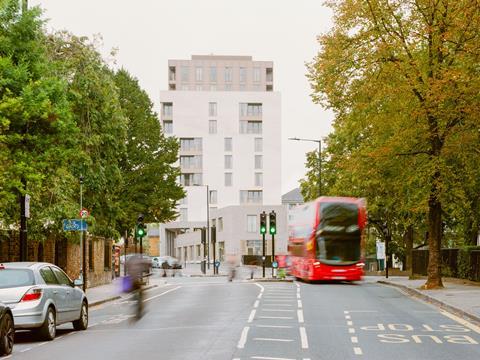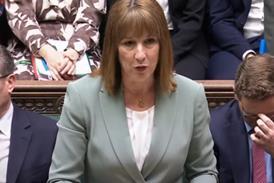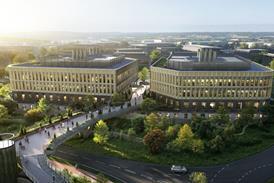Setareh Neshati explains how Westminster City Council is responding to growing housing pressures by working with a diverse group of architects to deliver community-supported, affordable homes as part of its Fairer Westminster strategy

It’s well documented that local authorities are under extreme pressure to meet the demand on their housing waiting lists, and mandatory housing targets are set to intensify that pressure. In Westminster alone, the housing register has over 6,000 applicants, but on average only around 800 homes become available each year. Many of these are studio or one-bedroom properties, while larger family-sized homes are in huge demand. In the City, the average wait for a three-bedroom home is 16 years.
It isn’t just new applicants on the list. It includes families experiencing overcrowding, disabled residents who need adapted homes, and older people who require basic support to continue living independently. In addition, the council receives more than 2,000 homeless applications each year, with most applicants housed in temporary accommodation while awaiting longer-term options. What is less widely known about Westminster is that it is home to 200,000 people, with more than a third living in social housing.
It’s welcome that the government is focusing on mandatory housing targets as part of its drive to deliver “1.5 million homes over the course of this Parliament.” It is also encouraging to see housebuilding placed at the forefront of public debate, as a way to stimulate growth and raise living standards by getting “Britain building again.” However, as we accelerate delivery, it is vital to focus on building the right types of homes and neighbourhoods, and to ensure that communities are treated as partners throughout the process.
Over the past five years at Westminster City Council, we’ve made real progress in delivering the Fairer Westminster vision. By working closely with communities and some of the UK’s leading architects, we’ve been able to build more affordable council homes that respond to the diverse needs of our residents.
We’ve embedded council teams within estates to provide accountability, reassurance and long-term relationships. This approach has helped to secure community support, with the Ebury Bridge regeneration project receiving 91% backing from residents during a GLA ballot.
The borough has a higher-than-average proportion of older people (16.8%), and this is expected to rise as the population grows to over 220,000 by 2030
Earlier this year, we completed Darwin House, the latest scheme in our development programme. Located on the site of a long-abandoned pub on the edge of the Churchill Gardens estate in Pimlico, it provides 34 new community-supported apartments for older residents aged over 60. The layout, design and facilities were shaped with input from residents of the neighbouring sheltered scheme, the original Darwin House. The move from studio bedsits to new one-bedroom homes overlooking Battersea Power Station was met with clear excitement.
Built to HAPPI principles, the homes offer good light, ventilation and storage, alongside daily support from home carers, an on-site scheme manager, guest accommodation and shared spaces for socialising and activities.

Levitt Bernstein’s Darwin House is part of a wider programme of new housing for older residents. PRP’s Beachcroft House in Maida Vale has delivered 84 new homes, and Mae’s Daventry House in Church Street, near Edgware Road, has provided 60 homes. All are fully affordable at social rent levels. This work reflects the growing need to improve sheltered housing and meet the needs of Westminster’s older population. The borough has a higher-than-average proportion of older people (16.8%), and this is expected to rise as the population grows to over 220,000 by 2030.
In the next three years, more than 100 further homes for older residents will be delivered, with the Carlton Dene scheme in Maida Vale due to complete next.
The Fairer Westminster strategy has guided our approach to maximise council homes for social rent across all developments. At 300 Harrow Road in North Paddington, we delivered 100% affordable housing, including 77 homes for social rent and 35 at London Living Rent levels. Originally planned with 50% market-sale homes, the scheme was reconfigured under the Fairer Housing strategy. Many units were let through a Local Lettings Plan prioritising residents with strong local ties.
At Ebury Bridge, one of our flagship regeneration projects, we recently completed phase one, delivering 100 new social rent homes in Knightsbridge and Belgravia. When the full scheme completes, it will provide 781 new homes across three phases, with 56% classed as genuinely affordable. The development, designed by Astudio, also includes new public realm, community spaces and a low-carbon heating and cooling system powered by an open-loop ground source heat pump.
By working in partnership with local people, meeting specific housing needs and tackling challenges at a local level, we are delivering homes that offer security, comfort and improved well-being
To ensure long-term delivery, we’ve built a team with the experience and capacity to drive projects forward, from early-stage planning through to completion. Our commitment to accountability is reflected in dedicated estate-based teams supporting residents through rehousing, as well as regeneration professionals delivering complex schemes.
A sustainable operating model is also central to our work. Westminster has a strong record of securing external funding to reduce pressure on local authority budgets. Our in-house Programme Management Office (PMO) has secured £120 million in GLA funding, including over £20 million from the Department of Health. We maintain regular dialogue with the GLA and other partners to identify and pursue funding opportunities. Once approved, we closely monitor delivery to meet the conditions required for funding drawdown.
Looking ahead, our team is drawing on broad built environment expertise to identify new sites across Westminster for the next generation of development. With around 70% of the borough designated as a conservation area, we are exploring creative options on underused and disused sites, alongside major redevelopment projects. This work has laid the foundation for a further 500 homes in the housing pipeline.
In parallel, we are preparing for the new regulatory environment introduced by the Building Safety Act. By investing time and knowledge upfront, we aim to reduce delays to both project delivery and resident occupation under the new safety regime.
By working in partnership with local people, meeting specific housing needs and tackling challenges at a local level, we are delivering homes that offer security, comfort and improved well-being. While the national housing crisis presents complex and ongoing challenges, local authorities have a vital role to play. It is more important than ever that councils and communities are equipped and supported to meet that challenge head on.
>> Also read: How a team including LDA, Bell Phillips, DMA and Mae are writing a new chapter in Westminster’s council housing story
>> Also read: Bringing dignity and joy to later living: Mae’s Daventry House project sets a whole new standard
Postscript
Setareh Neshati is Director of Regeneration and Development at Westminster City Council.
















No comments yet